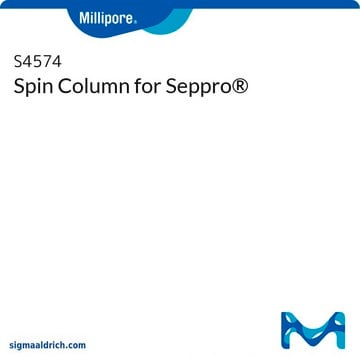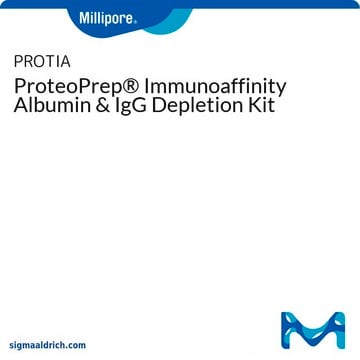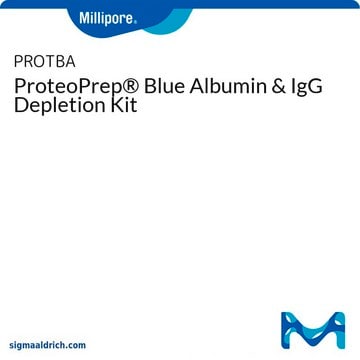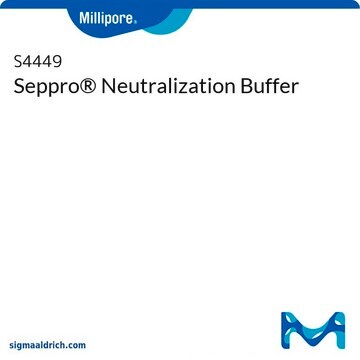SEP010
Seppro® IgY14
Spin Columns
About This Item
Produits recommandés
Capacité
1 mg total protein loading(14 μL of human plasma, average human protein concentration 70 mg/mL)
Température de stockage
2-8°C
Vous recherchez des produits similaires ? Visite Guide de comparaison des produits
Description générale
Proteins Depleted:
Albumin
IgG
α1-Antitrypsin
IgA
IgM
Transferrin
Haptoglobin
α2-Macroglobulin
Fibrinogen
Complement C3
α1-Acid Glycoprotein (Orosomucoid)
HDL (Apolipoproteins A-I and A-II)
LDL (mainly Apolipoprotein B)
Application
Informations légales
Composants de kit également disponibles séparément
Code de la classe de stockage
10 - Combustible liquids
Faites votre choix parmi les versions les plus récentes :
Déjà en possession de ce produit ?
Retrouvez la documentation relative aux produits que vous avez récemment achetés dans la Bibliothèque de documents.
Filtres actifs
Notre équipe de scientifiques dispose d'une expérience dans tous les secteurs de la recherche, notamment en sciences de la vie, science des matériaux, synthèse chimique, chromatographie, analyse et dans de nombreux autres domaines..
Contacter notre Service technique






